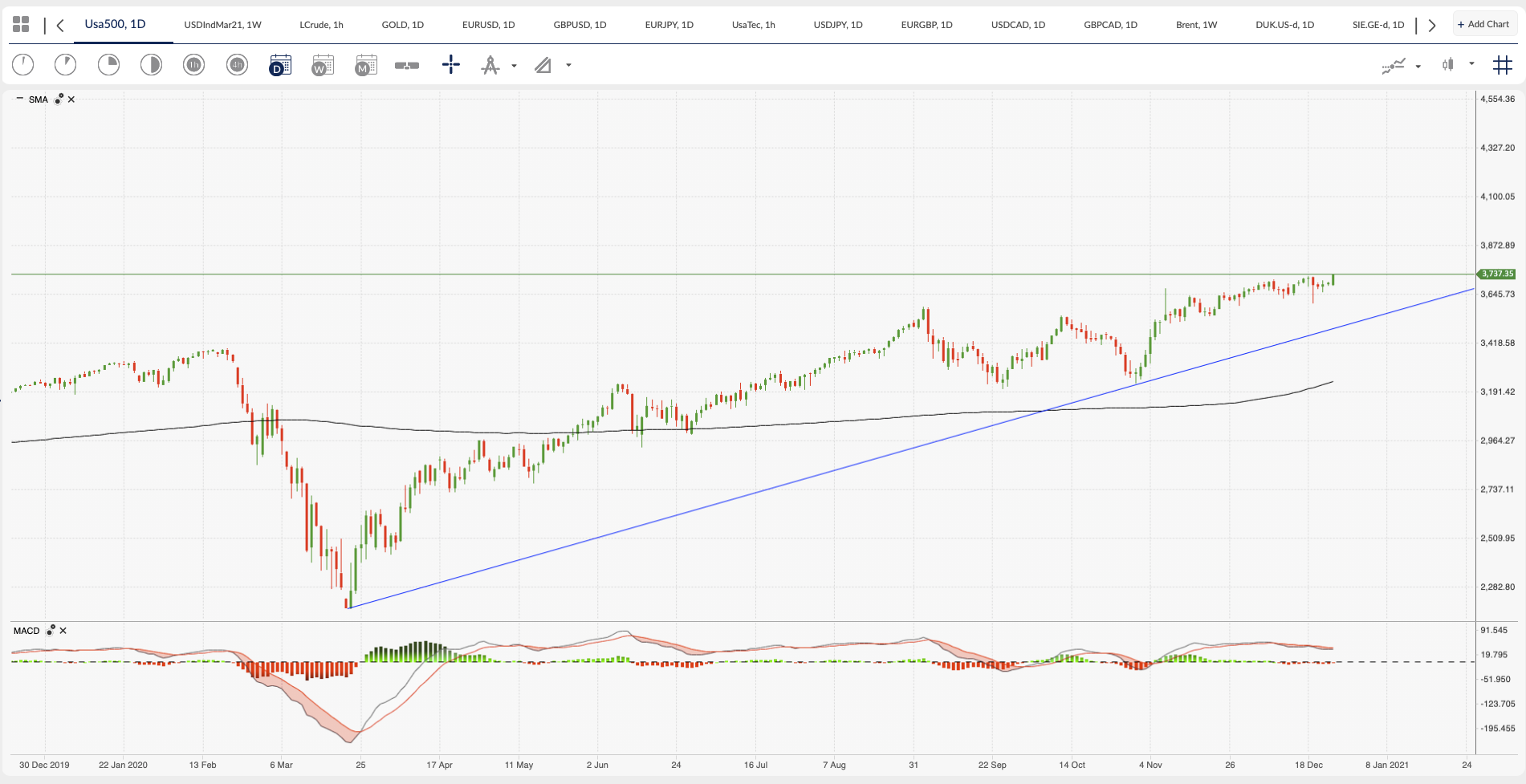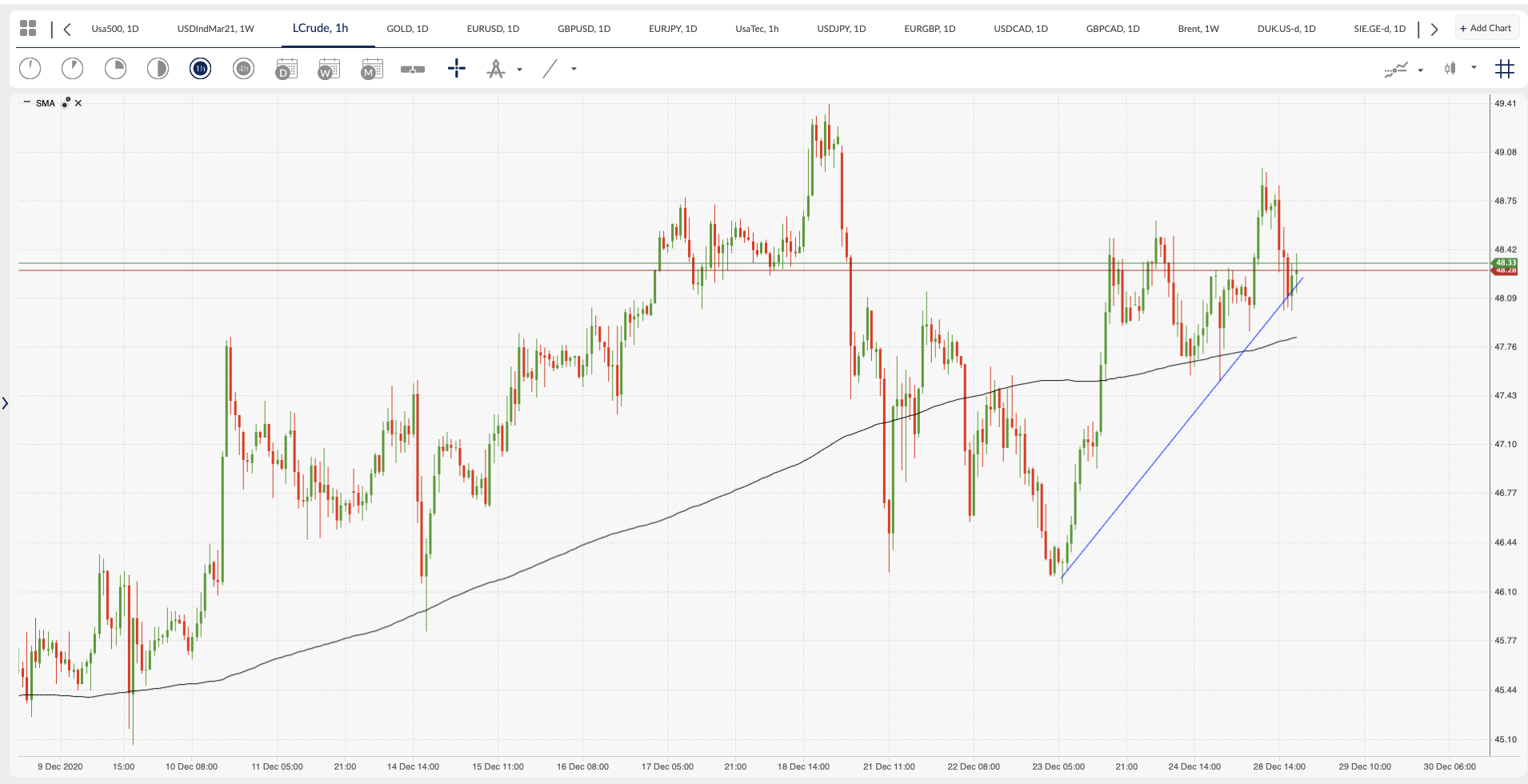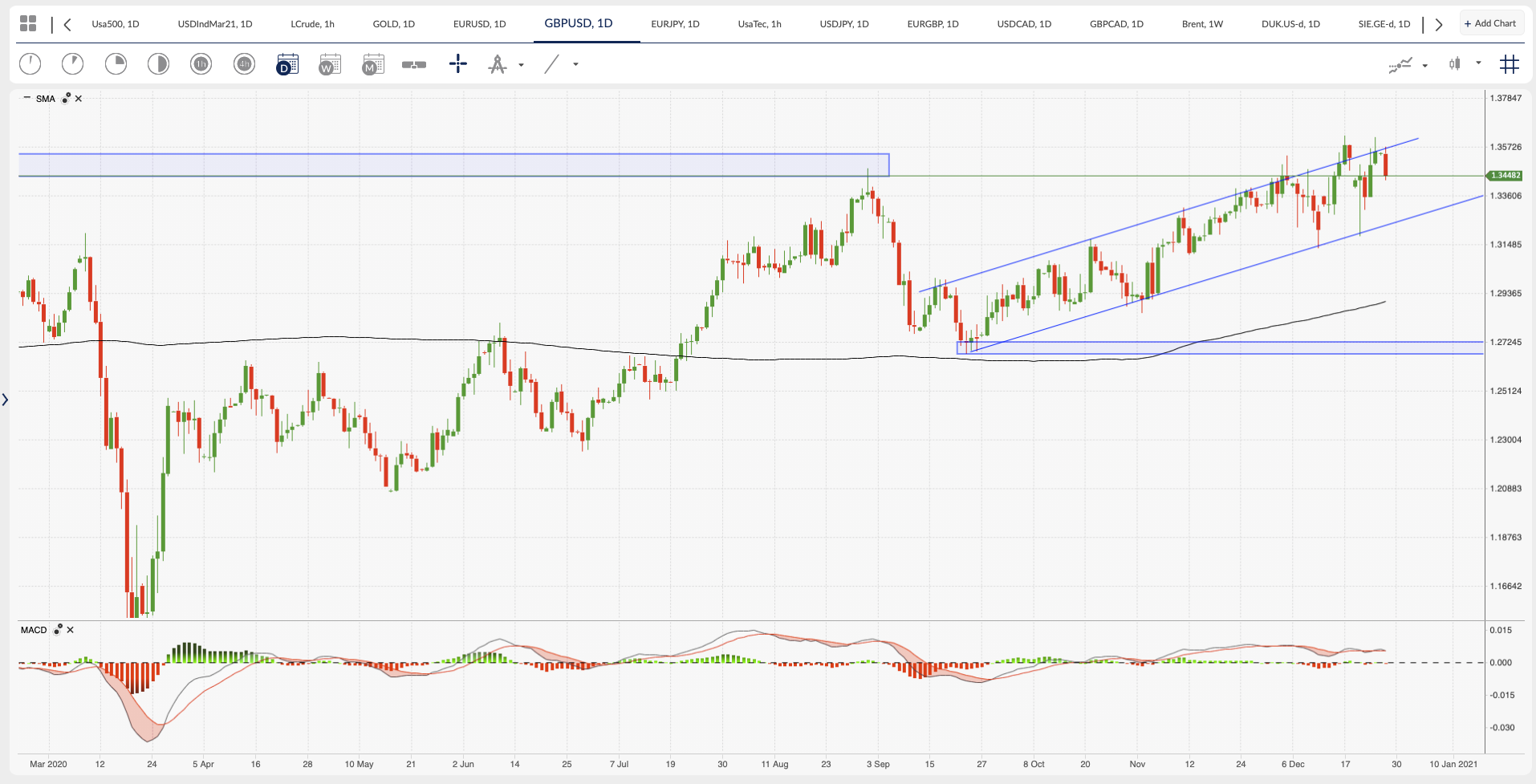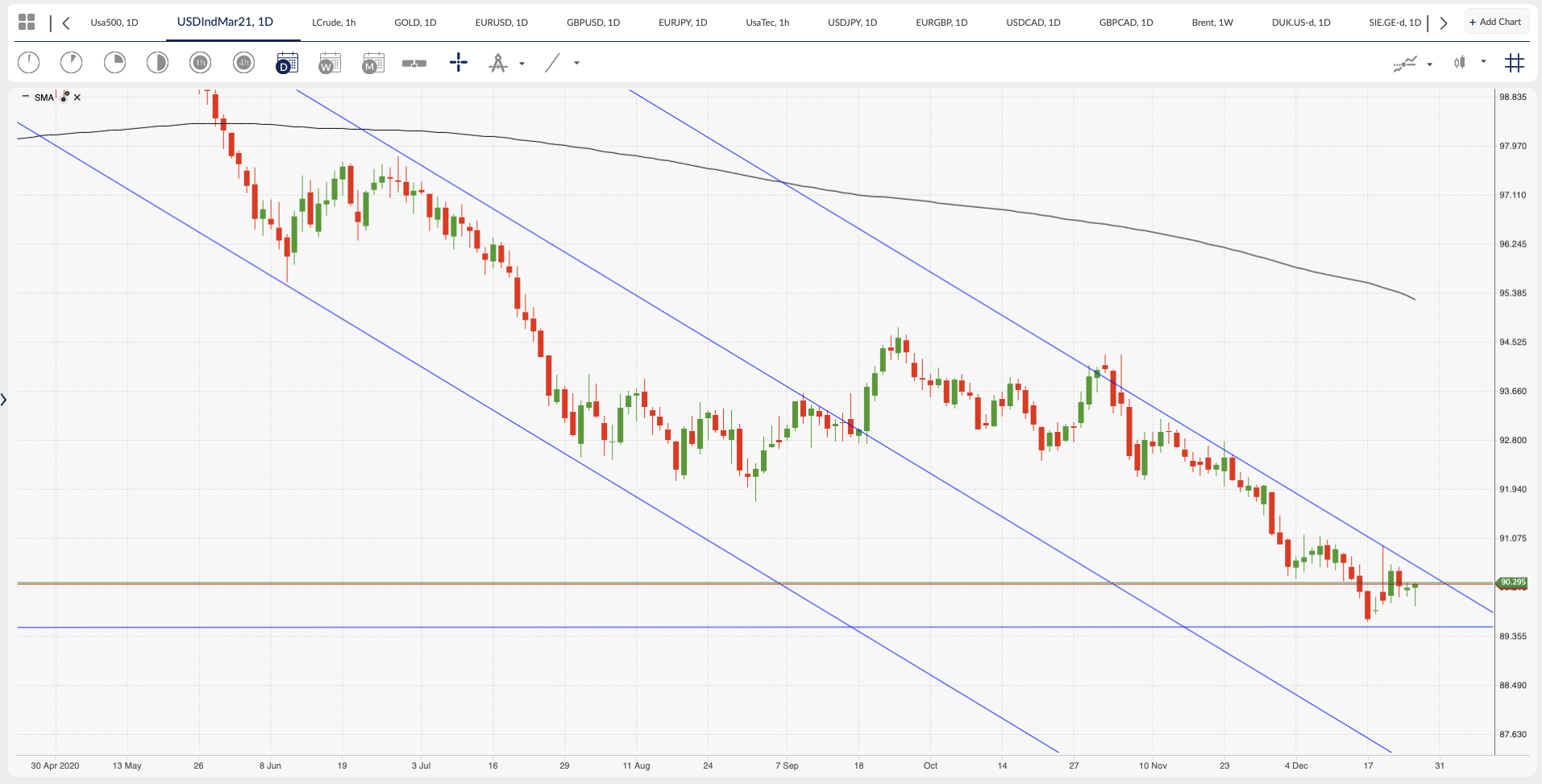The Trump administration has given the financial markets one last gift this Christmas in the form of a catalyst for the perennial Santa Clause Rally. The Santa Claus rally is the description given to the stock price rises during the last 5 trading days in December and the first 2 trading days in the following January. The Santa Claus rally was first recorded by Yale Hirsch in his Stock Trader’s Almanac in 1972 and has been the most anticipated seasonal effect every year ever since. Some would say “don’t short a thin quiet market”, as the indices are designed to go up and without news there is no real pressure on them to come down.
For the average American, the stimulus and spending bills which amount to $2.3trillion will also bring quiet relief into the end of the most turbulent of years. All-time highs in the stock market may sound good and give cheer to anyone who associates S&P500 (Usa500) high prices as conducive to making America great again, but the reality is that the stimulus bill will avert the missed unemployment cheques and possibly stop the evictions that a lot of people would have been worrying about.


Globally most indices that traded made highs today as another risk event is moved aside, leaving the current COVID situation as the one true weight around the market’s necks. The calendar was very light today, with the Dallas Fed Manufacturing Index for Dec being the one economic indicator, and it made very little difference. The upside was that there has now been 5 consecutive months of growth, so we can cheer on that. Just not so good that the readings are declining since the October high.
The energy markets were down, with Crude coming off -0.10% as the US dollar gained into the US session rising 0.15% on the day. Also, suffering slightly were the commodity forex pairs, with Canadian dollar versus the US dollar coming off 0.22% and the AUDUSD printing -0.34% lower at the time of writing.


The markets were definitely more risk-on as the US treasuries were lower today, with their yields inversely higher, so seeing the US dollar index higher suggests to me that may unwind either into the close or early this week. The core relationship between US treasury yields and stocks is usually positively correlated and so can be said for Bonds and the US dollar. Seeing that correlation break down today suggests to me there is some risk in the markets for a quick unwind somewhere. If in doubt I find it is better to stay out.
The start of the US session saw the GBPUSD sell-off and as the London session came to a close, prices were trading in a small range between 1.34300 and 1.34600, another leg down to 1.3300 is on the cards as we approach the votes by the UK parliament on the UK/EU trade deal. It has emerged that the UK financial services access to the EU markets is not covered by the agreed trade deal, but it should be pointed out that the City of London is independent to the rest of the UK and even the Queen has to ask permission from the City’s Lord Mayor to enter. This may or may not have some baring on why the financial services were not covered within the trade deal. There is going to be another process of ‘equivalency’ where the EU and UK regulated companies agree on most matters of trade.


If today’s bearish price action in the GBPUSD pair were to continue past last Wednesdays low of 1.3347, we could be in for a larger price move as the momentum and price action would have broken through the supporting bullish channels lower bound. The next significant support levels would be the daily 200 sma around 1.2890 and the October swing lows.
The US dollar may get bid up more into the new year depending on how much noise around further stimulus is created by the likes of President Trump, Speaker Pelosi, and the Democrats in the Senate. The call for $2000 per person within a COVID-19 aid package is being stopped by the Republicans in the Senate but it is clear that more stimulus will be tabled when President Biden is inaugurated at the end of January 2021.






